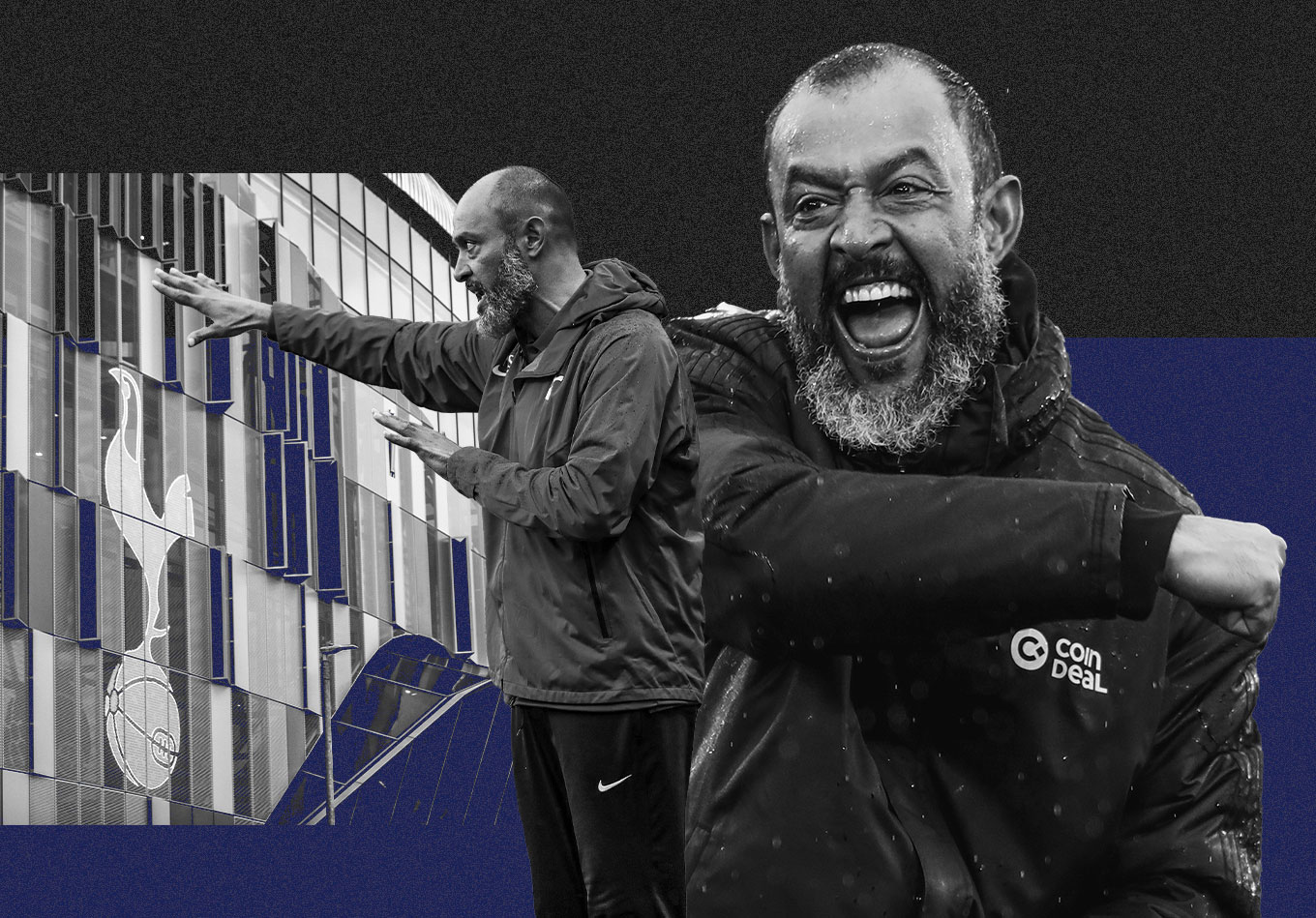As Euro 2020 played out this summer, the twists and turns in Tottenham’s seemingly endless search for a new Head Coach threatened to compete with European football’s showpiece for newspaper headlines. With the club finally appointing Nuno Espírito Santo at the end of June, what can supporters in the blue and white half of North London expect from the man who established Wolves as Premier League mainstays?
As 10,000 Spurs fans made their way back into the Tottenham Hotspur Stadium for the club’s final home game of 2020-21, they were greeted with an end-of-season message from their chairman in the matchday programme.
Reflecting on the events of a fruitful 12 months, Daniel Levy acknowledged that the club had “lost sight of some key priorities and what’s truly in our DNA” before going on to stress that “we shall focus on the recruitment of a new Head Coach. We are acutely aware of the need to select someone whose values reflect those of our great club and return to playing football with the style for which we are known – free-flowing, attacking and entertaining – whilst continuing to embrace our desire to see young players flourish from our academy alongside experienced talent.”
The match itself ended in familiar fashion. After going 1-0 ahead, they succumbed to a 2-1 defeat to Aston Villa, which meant that the club had dropped a mammoth 23 points from winning positions over the course of the campaign, a stat which no doubt contributed significantly to the club’s failure to secure Champions League football for a second successive season.
As for the subsequent head coach appointment, which followed a mammoth 72-day search, including a number of failed attempts to lure high-profile targets to the dugout, Levy and new Managing Director of Football, Fabio Paratici, finally settled on Nuno Espírito Santo as the club’s new head coach.
The Portuguese is the eleventh man to take permanent charge during the Levy era and based on his time with Wolves, particularly during his first two Premier League campaigns, the 47-year-old would not be the first coach you associate with delivering free-flowing, attacking football. Nonetheless, he has accepted the task of getting Tottenham back on course, with a pledge to ‘make the fans proud, make them enjoy watching’.
Whilst his time at Molineux ended disappointingly, with only three wins from his final twelve league matches, it is worth remembering that his charges finished level on points with Spurs in 2020-21, as well as reaching the Europa League quarter-finals where they narrowly lost to the competition’s perennial winners, Sevilla.
He was also a coach willing to give youth a chance to flourish, with five players aged under 21 seeing more than 500 Premier League minutes in his last season – potentially good news for the likes of Japhet Tanganga and the returning Oliver Skipp.
So as he prepares to take charge of his first competitive game in N17, we take a look back on his time in English football so far to try and obtain clues into what Nuno’s Spurs may look like, as he looks to bring smiles back to the faces of the Spurs faithful, with or without their talismanic number 10.
Establishing Strong Defensive Foundations
Nuno’s success at Wolves was due in part to a resolute defence, marshalled by Conor Coady, a near ever-present in his four years at Molineux. For the majority of that time, they set up with three central defenders, before reverting back to flat back four for 14 matches in his final season, something which he has also adopted with Spurs in their recent Mind Series friendlies.
This defensive set-up resulted in Wolves being very difficult to break down, and this is reflected in the quality of chances they conceded. Based on their non-penalty expected goals conceded per 90, they ranked well inside the Premier League top ten during every season under Nuno.
Wolves’ defensive solidity peaked in 2019-20, when only Manchester City and Manchester United recorded a better defensive xG output, which meant they lost only nine matches in the entire campaign. Only United and champions Liverpool lost fewer matches that season.
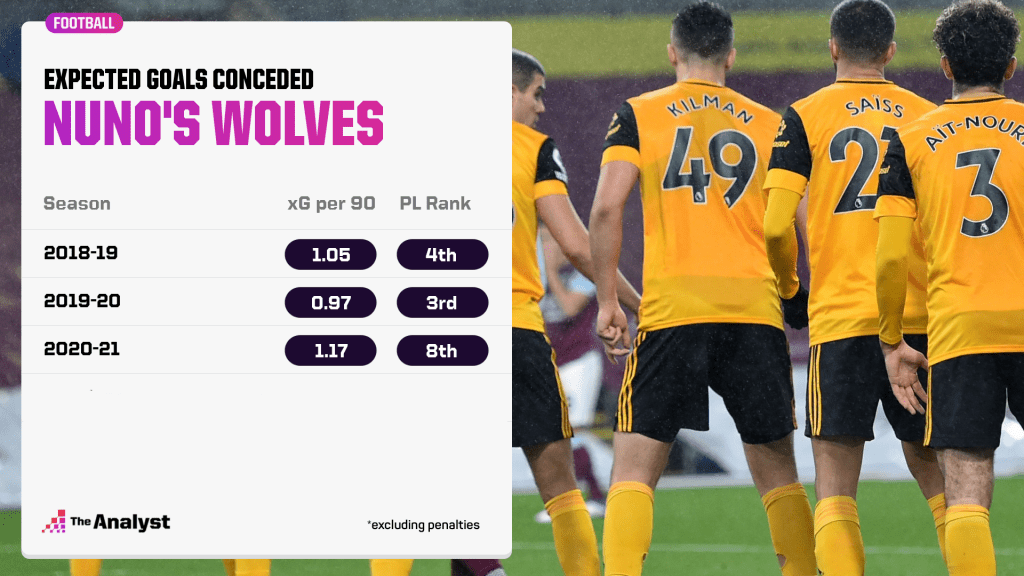
Whilst Spurs under Mauricio Pochettino were renowned for their high intensity, pressing game – their PPDA score of 10.9 in his final full season in charge was the second lowest in the Premier League – Nuno’s success at Wolves has been based on predominantly being compact out of possession and keeping their shape, instead of looking to win the ball back high up the pitch. Their high turnover count for last season, 205, was the second lowest of all top-flight teams and their PPDA since 2018-19 has consistently remained around 15, which indicates that they were content to allow their opponents to have the ball.
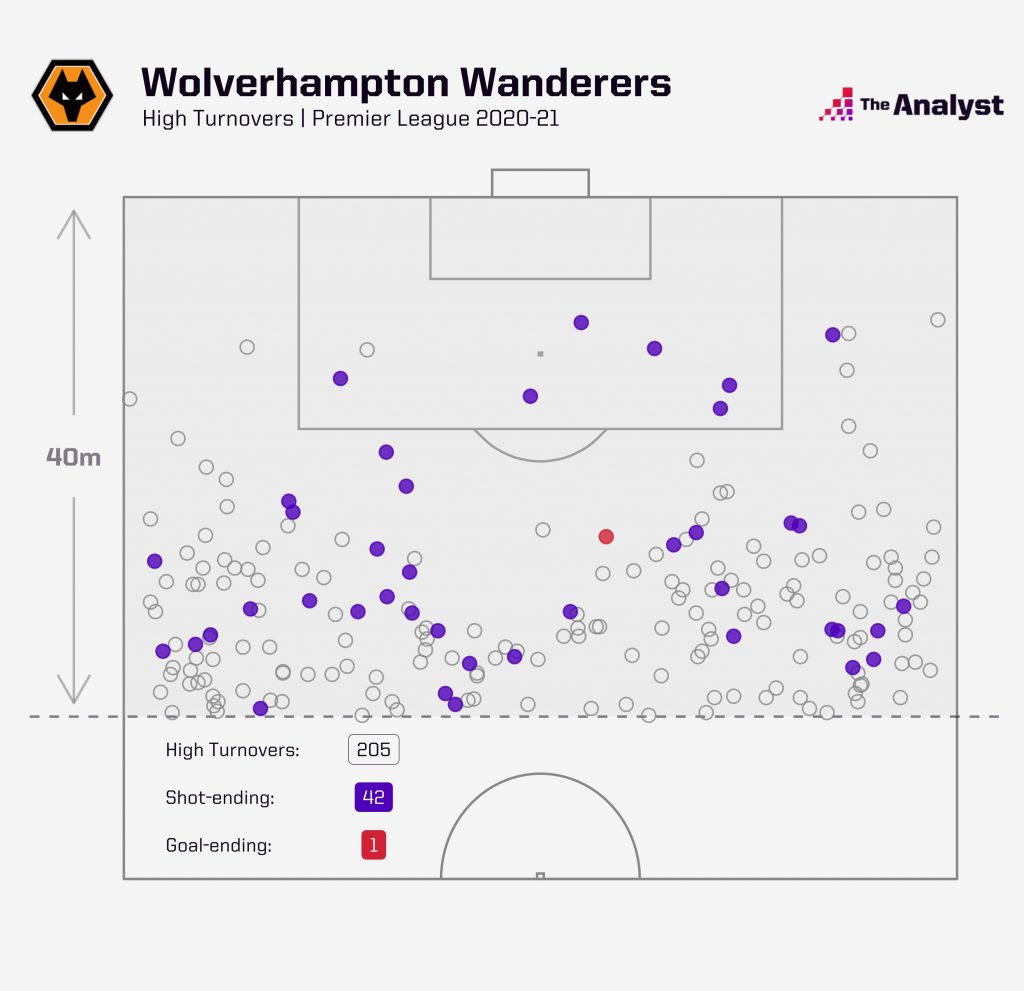
It will be interesting to see if Nuno adopts a similar defensive set-up at Spurs or will look to adapt, in line with the style advocated by his chairman.
One thing is for certain is that the backline will look very different in terms of personnel, following Toby Alderweireld’s departure and the arrival of Cristian Romero from Atalanta, with talk of further defensive reinforcements to come before transfer deadline day.
In Romero, voted Defender of the Year in Serie A last season, Spurs are now in possession of a centre back who is incredibly proactive in looking to win the ball back. Of all centre backs to play at least 500 minutes in last season’s Italian top-flight, he ranked first for ball recoveries, second in interceptions and third for aerial duels contested, with a success rate of 68%, well above the league average for centre backs (58.9%).
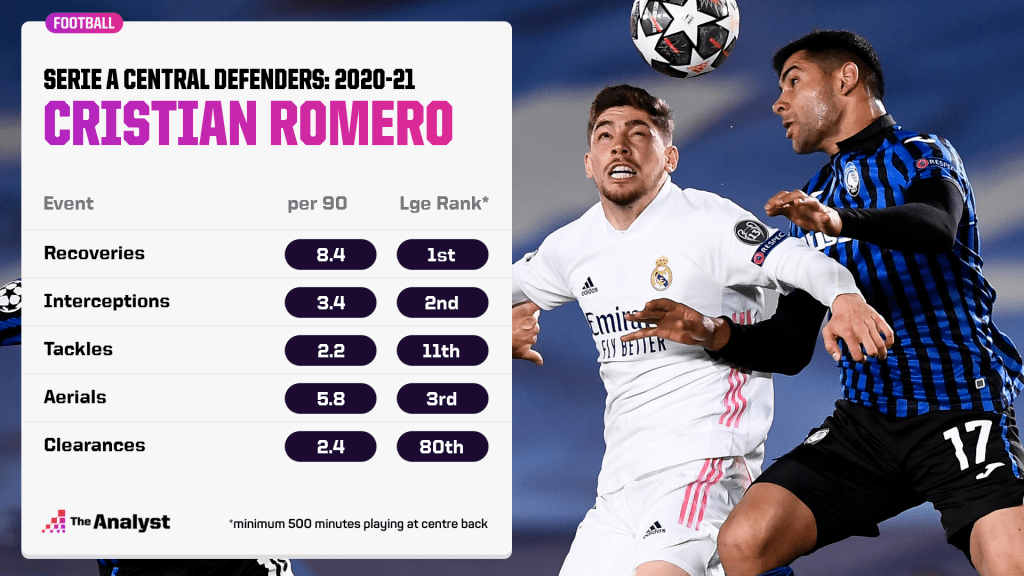
What is also noteworthy about Romero’s stats is his low volume of clearances. When winning back the ball, he was instrumental in then initiating possession moves for Atalanta, which is reflected in the number of open play possessions he started last season, 8.4 per 1000 opposition touches, which was the fifth highest of all Serie A players.
Romero is unlikely to feature against Man City on Sunday, as he recovers from an injury sustained in Argentina’s successful Copa America campaign. However, given he operated in the middle of three centre backs in Italy, like Coady did for Wolves, it may indicate that Nuno is considering returning to the same system that served him well in his first two seasons in the English top-flight once Romero is fully fit.
Utilising Ball Carriers in Wide Areas
One of the standout features of Wolves’ attacking play under Nuno was the threat provided by wide players, in advanced areas, carrying the ball towards goal.
Whilst it will come as no surprise to hear Jack Grealish created the most chances following a carry in each of the last two Premier League campaigns, Adama Traoré actually contributed more assists following a carry than the Manchester-bound England international during the same period.
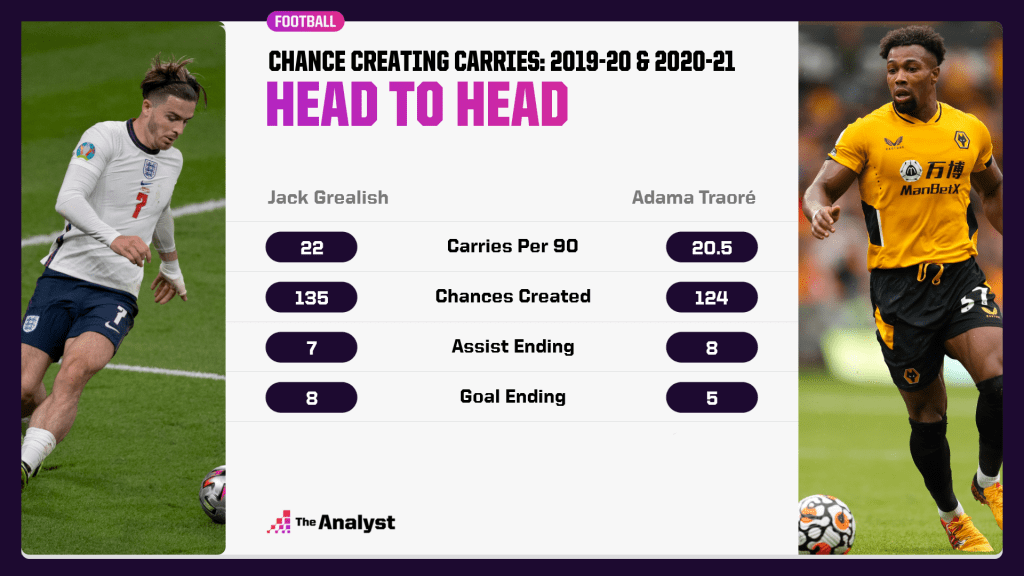
The threat offered by Traoré and Pedro Neto through directly running with the ball is reflected by their Possession Value (PV) outputs for the 2020-21 season. Possession Value assigns credit to players based on their positive and negative contributions in possession, covering key on-the-ball events including passing, dribbling and crossing, and how they increase a team’s probability of scoring during the next 10 seconds of play.
Neto’s net PV of 0.26 per 90 was by far the highest in Wolves’ squad last season, with Traore ranking second. In both cases, over 30% of their progressive net PV was generated as a result of dribbling, which was substantially higher than any other player in the squad.
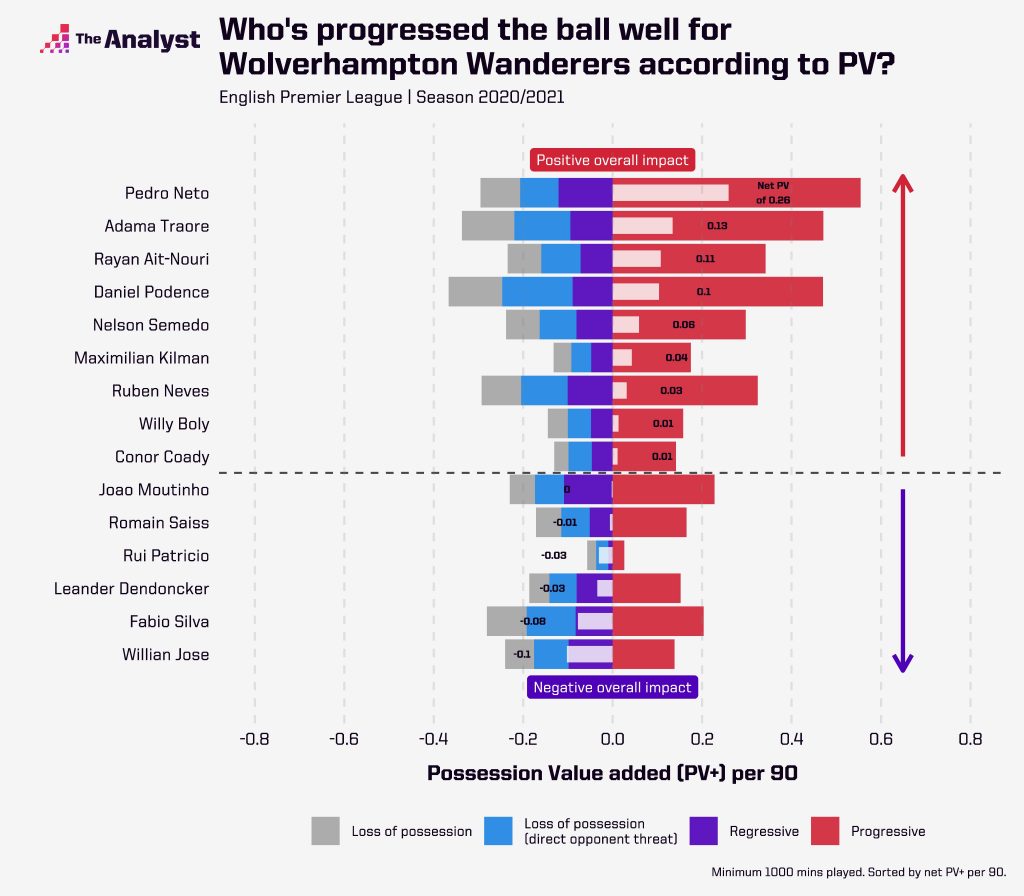
Of the Tottenham squad Nuno has inherited, Hueng-Min Son is one standout in relation to generating chances from carries. As well as recording the highest PV output for progressive dribbling of any Spurs player last season (0.13), Son also scored nine of his 17 Premier League goals following a carry, more than any other player in the league. As shown by the pitch map below, a large proportion of these came from when he cut in from the left-hand side.
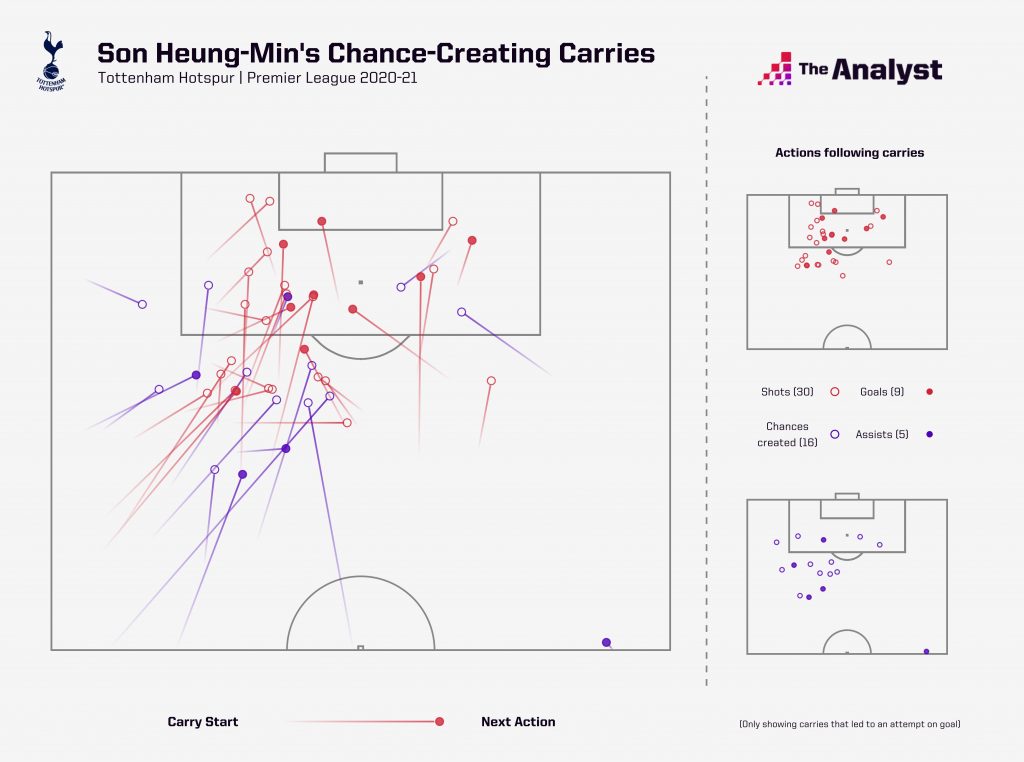
Harry Kane’s absence in pre-season has seen Son, fresh from signing a new four-year contract, operate in a more central role in Spurs’ friendly matches. Fortunately for Nuno, if he needs to utilise Son centrally on a more regular basis as the season progresses, he can also call upon Bryan Gil, whose direct threat was profiled in-depth on The Analyst last month, to play on the left.
Having been away on international duty with Spain, it is unlikely that Gil will be in the mix for a starting berth on Sunday. But given the license Nuno has given ball-carrying wide players to create goalscoring opportunities in the recent past, it would come as no surprise to see the 20-year-old having a big role to play in Spurs’ campaign.
Linking Defence with Attack
Given Levy’s desire for Spurs to ‘return to playing football with the style for which we are known’, it will be fascinating to see if Nuno looks to make a few tweaks to his playing style to adopt a more possession-orientated approach in the opening weeks of the season.
Whilst Nuno’s teams have been renowned for being well-organised defensively, it is worth remembering that during his first season in charge at Wolves, when they secured the Championship title, Wolves were one of the most possession-focussed teams in the competition. As highlighted by Stats Perform’s Sequence Framework, both they and Fulham were outliers in relation to the average number of passes per sequence, whilst Wolves also recorded the longest average sequence time (10 seconds) in 2017-18.
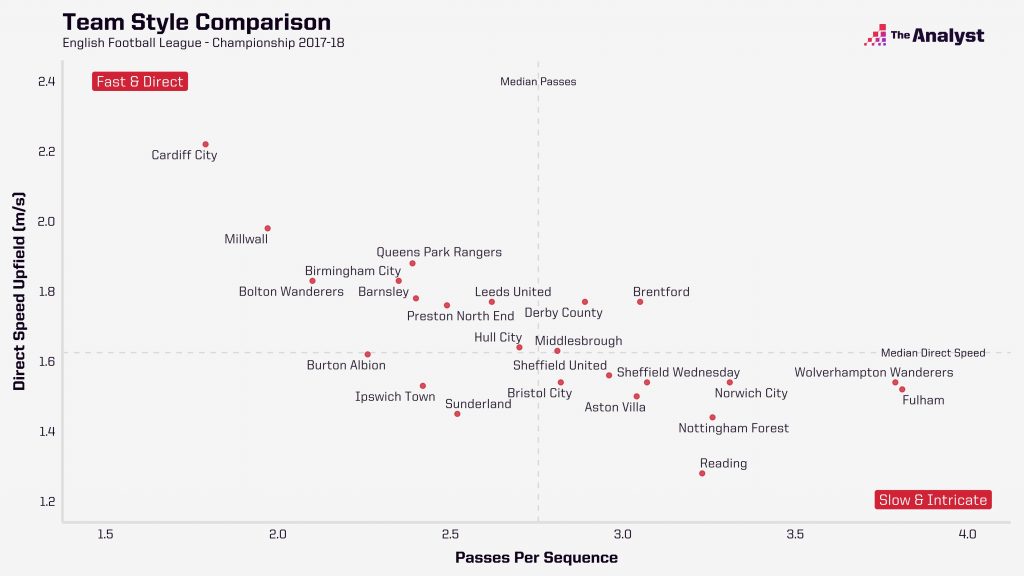
It is important to caveat this by stating that adopting possession-based football in the Championship is very different to adopting the same approach in the Premier League, and that Wolves did have, on paper, the strongest squad in the division. Their sequence outputs would have also been influenced by the game state, where they led games for extended periods. However, what it does indicate is that Nuno is a coach who is willing to adapt his style to suit the situation.
Romain Saïss and Rúben Neves were at the heart of that promotion-winning Wolves side. Operating in central midfield, they averaged 58.4 and 56.6 completed passes per 90 respectively, which was by far the highest two outputs in the squad. Both players predominantly acted as a link to receive the ball from the central defenders, before moving the ball to the wing-backs to build up attacks from wide areas.
If Nuno wants to utilise a similar approach at Spurs, he already has one player at his disposal adept at fulfilling this role, Pierre-Emile Højbjerg.
The Dane was a Premier League ever-present in his first campaign in North London and proved to be a key player when Spurs had possession. He received more passes per 90 (56.3) than any other Spurs player and was vital in linking play between the defence and attack. As illustrated by his heat-map below, he frequently looked to progress the ball into areas down the left-hand side, getting the ball into the advancing Sergio Reguilón. After Eric Dier, the Spaniard was the most common receiver of Højbjerg’s passes, receiving 257 passes during the season.
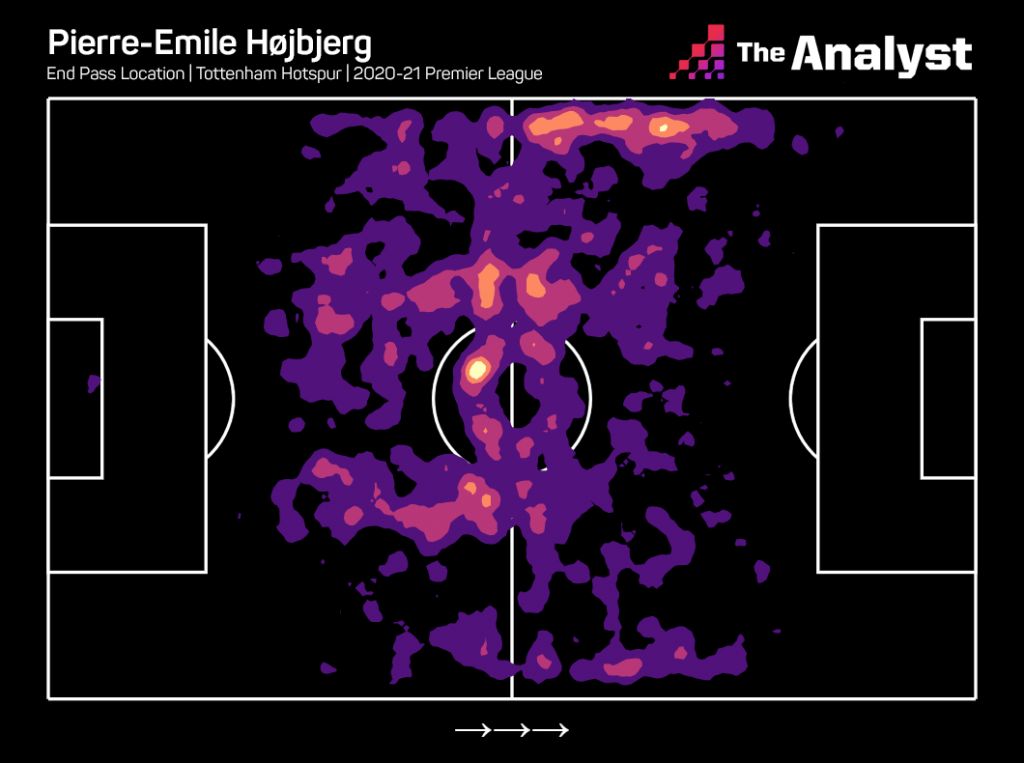
Whilst Højbjerg was one of the first names on the Tottenham team sheet, he ended up playing alongside a variety of teammates in central midfield. Moussa Sissoko was his most frequent partner, however, he featured in just 37% of all available Premier League minutes in central midfield.
With none of Spurs’ midfielders being able to secure a regular place alongside Højbjerg last season, returning loanee Oliver Skipp may get a chance early in the season to secure a first team place, having started in the last four friendly matches.
The 20-year-old started 44 matches for Norwich in the Championship last season, fulfilling a similar role to Højbjerg albeit looking to mainly link-up with the full back on the right-hand side, Max Aarons. So, in terms of balance, Nuno has two players who could potentially operate similarly to the Saïss and Neves axis he utilised during his first season in England.
The Kane Question
Whilst Nuno faces selection dilemmas in defence and midfield, these challenges are dwarfed by the uncertainty of Harry Kane’s situation.
The importance to Nuno of having a dominant focal point up front is perhaps best illustrated by Wolves’ fluctuating fortunes with and without Raul Jimenez last season. The Mexican’s head injury occurred ten games into the campaign, when Wolves sat seventh in the table, just three points off the leaders. His absence coincided with a big drop-off in performance as the club struggled to retain their early season momentum.
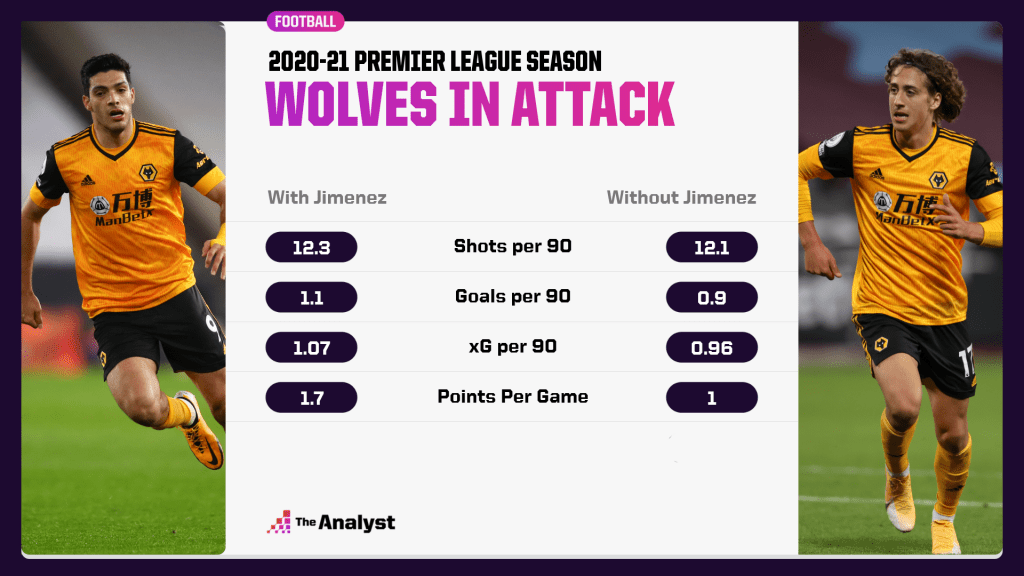
The importance of Kane to Spurs’ front line, both in terms of goalscoring and creating chances, is reinforced by a brand-new Stats Perform model which predicts a player’s outputs in various metrics against an upcoming opponent. If we apply this model to compare the outputs for Spurs’ attacking players for this weekend’s game with Manchester City, we can see that based on historical performance, Kane would be more than twice as likely to score than any teammate.
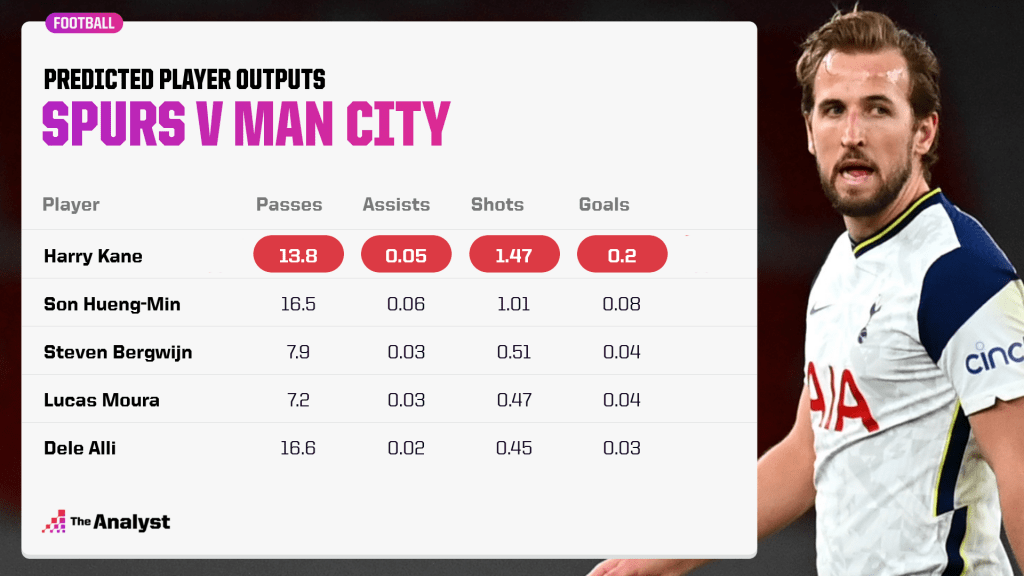
Whether Kane is likely to feature or not at any point on Sunday is open to debate, with Nuno stating in a press conference earlier his week that all players involved in training will be available for selection. Irrespective of whether he gets game time, based on the impact of losing his main striker last season Nuno may want to ensure that an adequate replacement is in place before any departure is sanctioned by the club’s leadership.
No matter what the outcome of the Kane stand-off is, what we can be confident of is that fans will see a different type of Tottenham side this season. If Nuno is able to combine the defensive solidity he enjoyed at Wolves, alongside the successful integration of a number of the club’s new young recruits, 2021-22 could well end up being the time we see solid foundations being set for the start of a new era in north London.
Enjoy this? Subscribe to our mailing list to receive exclusive weekly content.
Design by Matt Sisneros.
